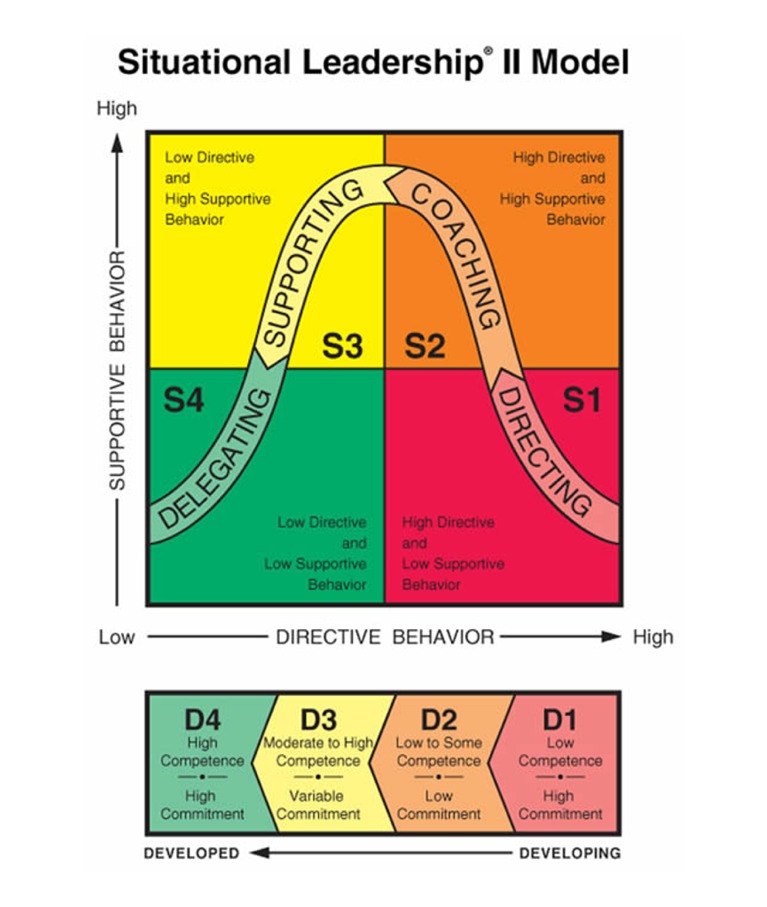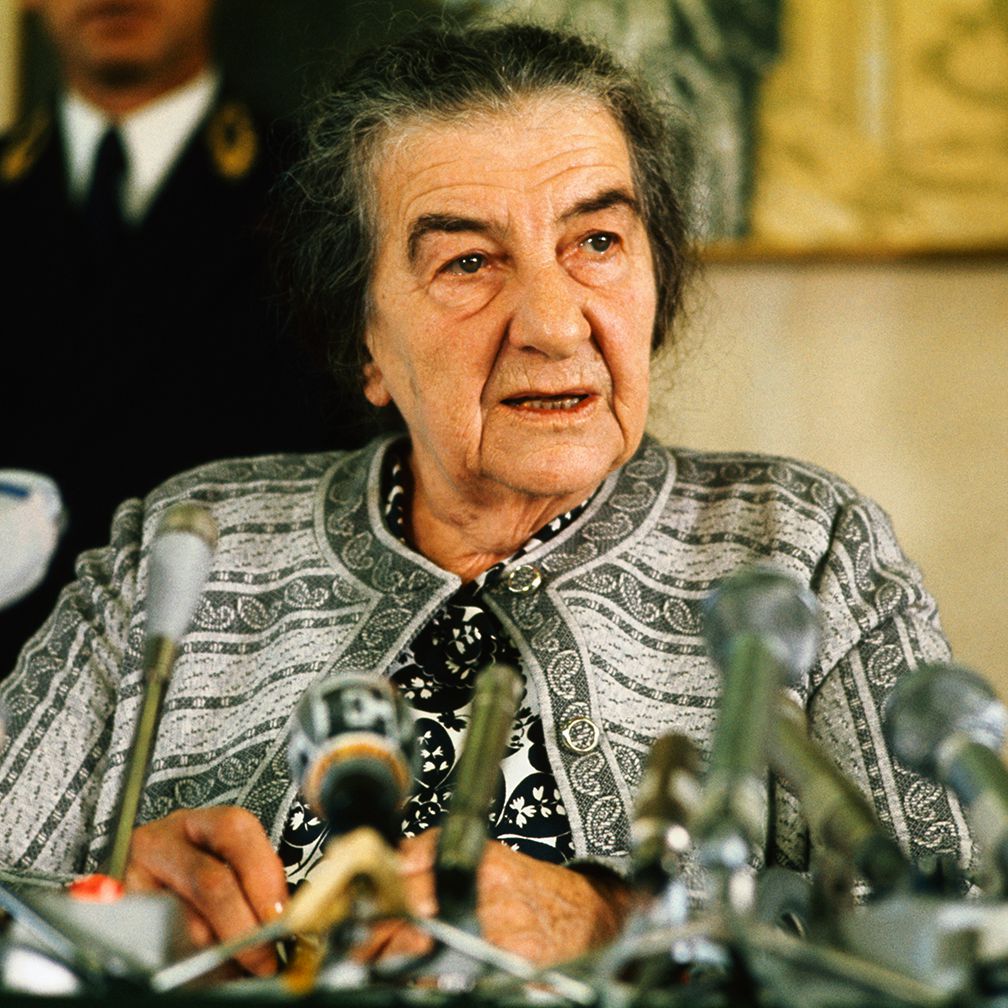What Can Situational Leadership Teach Us?
![x1 P L
1 wit 1570
101, v, >
“ty, 0 Pe)
ant %
\
\
“7,
2, Sn
7,
Nie
ZZ
~~ Fe)
Vip.
=
=
=
=
—=
=
==
i 09 ; ;
Qy3]](https://contents.bebee.com/users/id/11834830/article/what-can-situational-leadership-teach-us/849f50ae.jpg)
Leadership can be viewed as a process of influencing people. That’s no big revelation. However, the challenge arises when a leader wants to motivate their team or assist in their professional development and then determine which leadership style to use.
Ken Blanchard defined leadership style as “… the pattern of behaviors you use when you are trying to influence the behavior of others as perceived by them.” How you perceive yourself as a leader is one thing; what really counts is how others perceive you.
Both perceptions must coincide if your efforts to lead people are to succeed. For example, a manager whose personal perception is one of being a people person may conflict with how others see her: that of being an impatient and controlling task master.
The key point here is for leaders to develop a heightened sense of self-awareness, in particular their preferred modes of working with others. Understanding yourself is an essential step along the path of becoming a successful leader.
Developing a strong self-awareness will in turn enable a leader to adjust quickly to the necessary leadership style in a given situation. In reality, a leader may use several styles during the course of a day as they interact with their team on a variety of issues.
The Four Leadership Styles
Ken Blanchard and Paul Hersey were the first to develop a model on situational leadership. Their article Life Cycle Theory of Leadership appeared in Training and Development Journal in 1961. Yes, now going on 54 years ago. Click here for where the two authors revisit their model. Blanchard later updated the model to what he called the SLII. It’s this revised model that is the focus of this post (as shown in the image below).
Four basic leadership styles reflect different combinations of the traditional supportive and directive approaches to managing people. The four styles are represented on a four quadrant graph. Each style consists of three elements:
1) the degree of direction given by the manager,
2) the degree of support given by the manager,
3) the degree of involvement the employee is given.
Directive behavior is defined as the degree of one-way communication from the manager to the employee. In this case, the manager instructs the employee on his role, how to do his work, when and where to do it, etc. Three words that Blanchard uses to sum up this behavior are structure, control, supervise.
Supportive Behavior is the degree of two-way communication between the manager and the employee. In this instance, the manager actively listens, provides encouragement and includes the employee in decision-making. Three words that can be used here are praise, listen facilitate.
As the leadership styles in the above graph illustrate, a managerial leader operating in a directing (S1) style is using a strong directing behavior, combined with weak supporting behavior. Tight supervision is the norm in this situation.
In contrast, a delegating (S4) style reflects both low support and low directive behaviors. Here, the manager hands off responsibility to the employee, who in turn decides how to accomplish his objectives.
In between these two extremes lie the S2 and S3 styles. In a coaching (S2) style, the manager uses both high directing and supportive behaviors. The manager listens to the employee’s ideas and suggestions but retains control over making decisions. A supporting (S3) style involves low directive behavior combined with high support. Here, the manager listens attentively, offering assistance with problem-solving. However, the employee assumes greater control over decision-making.
There are numerous variables that affect how a leader operates with her people. They include the skill levels, work experience and expectations of the leader’s employees; deadlines; organizational culture (how work is done: teams versus individuals) and conflicting demands.

The Four Developmental Levels
To make his adapted model more dynamic Blanchard uses the concept of development level, which represents the degree of direction, or support, a manager needs to give to her team members. The following four levels connect to lanchard’s four quadrant graph, allowing the manager to determine the appropriate style to use. The four levels represent different combinations of competence and commitment.
D1 is a low level of development, reflecting low competence and high commitment on the employee’s part.
D2 is low to moderate level, in which the employee shows some competence yet low commitment.
D3 us a moderate to high level, representing high competence but variable commitment.
D4 is a high level, indicating both high competence and commitment.
The above graph shows the four development levels beneath the leadership style graph. As the employee’s development increases, his competence rises while commitment fluctuates. This is typical of someone taking on a new job or responsibilities. The employee is initially gung-ho, although lacking all of the necessary skills. His enthusiasm tapes off as he acquires more skill (D2). If the employee receives some assistance (coaching) from his manager, then he’s able to move out of this stage of self-doubt and on to D3 level.
To move the individual beyond D3, at which point there’s still some insecurity, the manager must provide a supporting atmosphere. If this is done properly, the employee can then transcend to level D4 and become a high performer. The key is for the manager to recognize where the employee is in terms of skills, experience, expectations and needs in the context of the task to be done.
For example, an employee may be a high performer, working in a delegating style (S4). However, the manager assigns him a project in an area in which she knows little. The manager must therefore adapt her leadership style to match the employee’s needs. This may mean initially using a directing (S1) style or perhaps a coaching (S2) style.
As the graph illustrates, the four development levels line up with the appropriate leadership style. Blanchard emphasizes that one mustn’t see the development level as a global concept but rather as a task-specific concept. People are at different levels of development, depending on the tasks or projects they’re working on. The interaction between the four leadership styles and development levels is summarized below.
Directing is used for low development: Close supervision, in which the manager is clear on her expectations and monitors the employee’s progress, is the appropriate style to use for someone who’s new to the task to be completed.
Coaching is used for low to moderate development: The manager uses fairly close supervision while employing supportive behavior to build confidence and enthusiasm in the employee.
Supporting is used for moderate to high development: Here, the manager actively uses two-way communication, making a strong effort to “hear” the employee. Both share in making the decisions. The manager’s primary role is one of facilitator.
Delegating is used for high development: While the manager may still identify problem areas for a particular task, the employee is given full responsibility for executing the plan. In short, the employee is running the show.
The goal of the manager-leader is therefore to assist her team’s competence and commitment so that each member is capable of completing their work on their own with as little supervision as possible. The manager who works towards this goal will earn two big dividends:
a) less time supervising and instead spending more time on other important work, such as strategic issues,
b) happier and more productive staff because they now have more control over their work.
A Comment on the Model
While this situational leadership model (notably Blanchard’s updating of the original model) has proven useful in the past, the rapid evolution of the workplace over the past decade calls for new thinking on approaches to leadership. The situational leadership model tends to be overly mechanistic and two dimensional. What needs to be integrated into this model is a more three dimensional approach. Organizations, as leadership practitioner Margaret Wheatley explains, are organic entities that continually evolve. And it’s not surprising to view organizations in this light because they’re made up of people, each possessing his or her values, beliefs and complex needs and wants.
Nevertheless, older leadership models, such as Blanchard’s and Hersey’s, still provide very useful frameworks for discussion–and indeed exploration– on how to adapt them to today’s organizations. Models provide the much-needed rigour for trying to understand the complexities of leading and managing in a chaotic world. We would be much poorer from a knowledge standpoint without them.
I embrace the unknown because it allows me to see new aspects of myself. – Deepak Chopra
Articles from Jim Taggart
View blog
When we look back to the 20th Century and reflect on great leaders, whether leading nations, organiz ...

I am your servant. I do not come to you as a leader, as one above others. · When you read these word ...

The human race is an odd species. Adaptive to immediate threats and catastrophes, we as humans have ...
You may be interested in these jobs
-
restaurant assistant manager
Found in: Talent CA 2 C2 - 7 hours ago
Zabu Chicken Restaurant Vancouver, CanadaEducation: · Expérience: · Education · Secondary (high) school graduation certificate · Tasks · Negotiate arrangements with suppliers for food and other supplies · Set staff work schedules and monitor staff performance · Address customers' complaints or concerns · Provide custo ...
-
cook
Found in: Talent CA 2 C2 - 6 hours ago
Aurora Sushi Grande Cache, CanadaEducation: · Expérience: · Education · Secondary (high) school graduation certificate · Tasks · Prepare and cook complete meals or individual dishes and foods · Plan menus, determine size of food portions, estimate food requirements and costs, and monitor and order supplies · I ...
-
Digital Marketing Manager
Found in: Talent CA C2 - 4 days ago
Jewish National Fund Of Canada Toronto, Canada Full timeDigital Marketing Manager (Maternity Leave Replacement) · Jewish National Fund of Canada · Company Description · For decades the Jewish National Fund of Canada has cared for the land of Israel. This mission took the role of planting trees, building water reservoirs, preserving ...



Comments